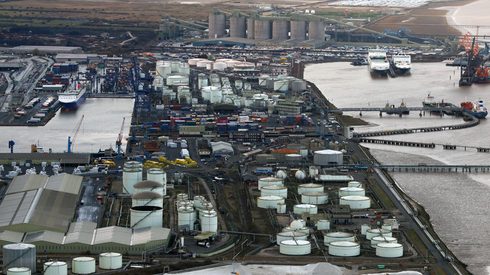European newsprint prices are falling once more as the second half of the year gets underway, continuing the downward trend seen since the start of 2023.
In Germany, the 45-g grade has come down by Euro 40-70 per tonne this month, after sliding by Euro 140-150 per tonne in the course of the second quarter. Meanwhile, in neighboring France, 42-g newsprint has followed decreases of Euro 110-125 per tonne in Q2 with a further fall of Euro 80-135 per tonne this month.
Across the channel, UK prices for 42.5-g paper remained steady for the rest of Q2, after declining by £85-110 per tonne in April, as quarterly contracts held. Levels then slipped again by £70-90 per tonne in early July, with some negotiations still ongoing as the UK price survey closed.
Moving further south, July pricing is still open in Italy and Spain, but early indications are that prices have fallen there, too. This comes on the back of decreases for 45-g newsprint in Q2 of Euro 170-175 per tonne in Italy and Euro 100-140 per tonne in Spain.
Newsprint demand still poor
Newsprint demand remains weak and operating rates are relatively low – in the region of 60-70% – according to reports. It is not clear to what extent customers’ stock levels are still affecting demand, market sources said.
Earlier this year, many buyers were running through newsprint inventories built up in mid-2022, at a time when they were worried about the continuity of supply over the winter in case of problems with energy availability.
I think customers didn’t even know themselves how much stock they had. It was difficult to get a clear view.
The demand drop can be seen in the numbers from Euro-Graph, the European association of graphic paper producers, for earlier this year: European newsprint demand for the first four months totaled 946,000 tonnes, down 22.5% from 1.22 million tonnes in the year-earlier period. The figures also showed that shipments within Europe fell 27.4% to 858,000 tonnes, while those outside the region dropped 9.3% to 312,000 tonnes.
“It’s hard to judge demand because of stocks decreasing at customers,” another seller explained last month.
This month, there are still reports of inventories here and there. But many sources, buyers and sellers alike, are now seeing more normal inventory levels and think the destocking trend has – or will soon – come to an end.
It remains to be seen if demand will pick up much as a result, though, after the traditionally slower summer months. The print market is declining; with advertising and circulation down, publishers have closed titles, reduced pagination and cut numbers of copies; plus, retailers have moved or are shifting some business away from print to digital.
I’m getting more and more skeptical about the industry assumption of high stocks [affecting demand]. I’m starting to think this is the new normal.
Another pointed out that year-on-year deliveries were “down massively” in the first half of 2023 compared to H1 2022 which cannot all be attributed to stock building by customers. He added: “It’s been difficult to understand what’s structural and what’s cyclical [in terms of the demand decline].”
Newsprint capacity cull
On the supply side, UPM closed PM 6 at its Schongau mill in Germany and PM 4 at Steyrermühl in Austria last month, taking 485,000 tonnes/yr of newsprint capacity out of the market.
Several sources also said that sales of newsprint from Model Group’s mill in Eilenburg, Germany, have now stopped, ahead of its planned conversion to recycled containerboard production.
These moves should help improve the market balance somewhat. Nevertheless, many think more capacity needs trimming in order to tailor supply to demand – and they believe further closures are in store.
“I think there will be more closures to come, especially with the speed at which prices have been dropping,” a seller said. “Everyone is waiting to see what’s going to come,” another commented. “It has to happen, [but] no one will be keen to do it.”
This article was first published in our PPI Europe newsletter. Find out how you can access the latest market news and price developments in Europe directly from your inbox by speaking to our team.






